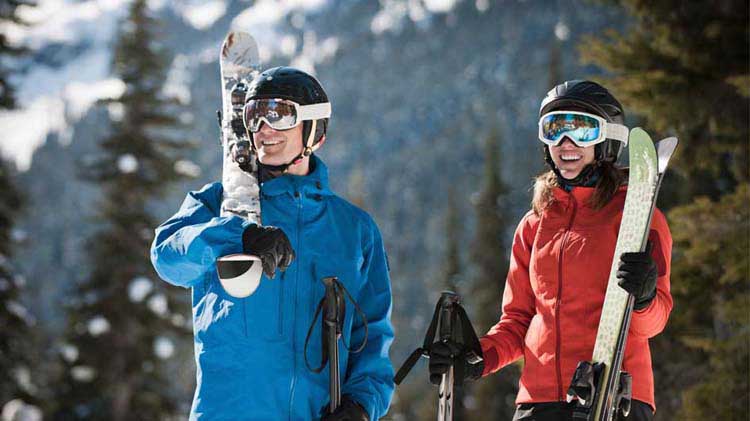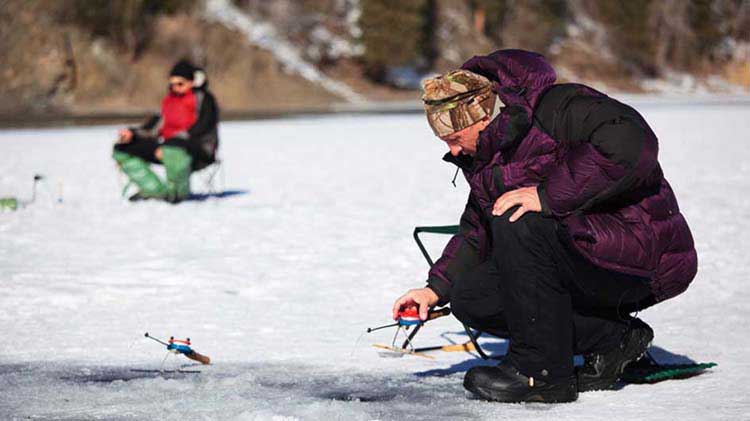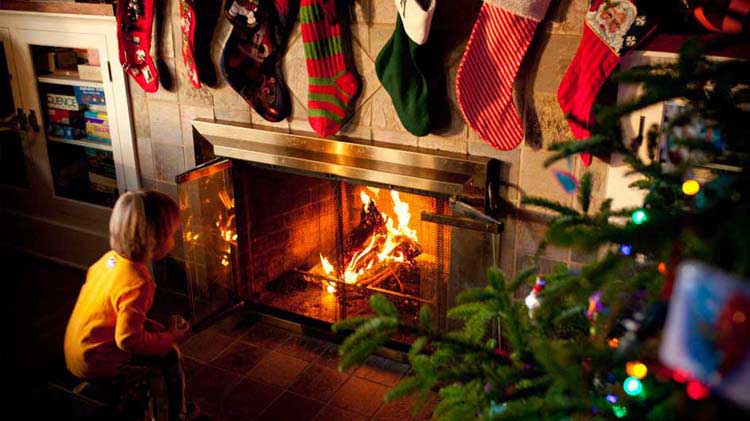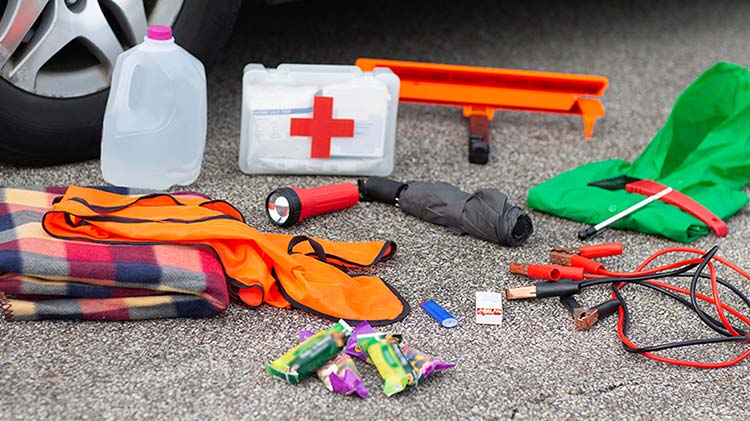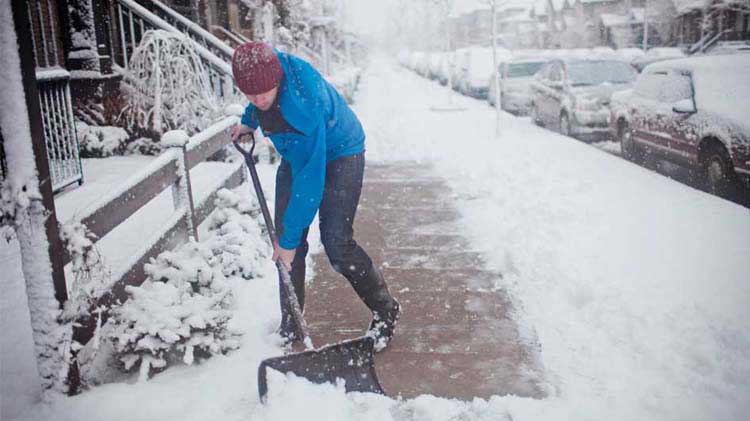Stay warm and safe during winter activities
Use these tips to help reduce the risks related to cold and keep you safe during your winter activities.
Cold weather tips for when you need to venture outside in the winter
Learn how to fight off some of the risks associated with winter's chill. Before bundling up to head outdoors, be sure to check both the temperature and the wind chill. Wind chill indicates how the air feels on your skin. It can vary dramatically from the actual temperature. Take extra safety precautions since low wind chills and cold temperatures can have dangerous effects on your body, such as frostbite and hypothermia.
- Frostbite occurs when parts of your body freeze from prolonged exposure to the cold. Warning signs include: numbness and skin that's white or grayish-yellow and unusually firm or waxy.
- Hypothermia sets in when your body is losing heat faster than it can produce it. There are several stages of hypothermia, but common symptoms include: uncontrollable shivering, memory loss, disorientation, slurred speech and drowsiness.
Victims with frostbite or hypothermia should receive immediate medical attention. For more information on how to respond, review these tips from the American Red Cross.
Consider these safety tips during winter activities
When you venture outside, layer up! Wear wool, silk or polypropylene inner layers and a tightly woven or wind-resistant outer layer. Finish off with the essentials: a hat, water-resistant boots and gloves or mittens. While participating in outside activities, don't wear clothing with drawstrings or scarves, which can risk strangulation. If you feel a scarf is essential, tuck the ends tightly into a coat, or opt for a neck gaiter or mask that covers the face and neck. Remove layers as you warm up — sweat can aid in heat loss.
Tips to stay safe while snow skiing or snowboarding
These safety tips can help reduce your chances of injury when you're skiing or snowboarding:
- Take lessons on how to stop, slow down and turn.
- Avoid skiing or snowboarding alone.
- Wear a certified helmet with wraparound goggles.
- Secure loose straps or clothing.
- Identify the appropriate trails for your skill level.
- Check your equipment before and after each run.
Tips for ice skating or playing hockey during the winter months
Keep these ice safety guidelines in mind when skating and playing hockey outside:
- Stick to ice at least 4 inches thick and free of ice fishing holes and other debris.
- Avoid ice that has formed over running water, such as a river.
- Wear a helmet: hockey helmets offer the best protection.
- Wear proper hockey equipment, including pads and gloves.
- Learn how to properly fall on ice.
Tips for snowmobile cruising
Learn how to ride a snowmobile safely and consider the following tips:
- If you are a novice, consider taking a snowmobile or snow machine safety training course before your first outing.
- Wear a helmet that is DOT-compliant and fits properly. Motorcycle and snowmobile helmets are similar, with differences in weight, insulation and the shield.
- Wear appropriate cold weather gear — such as a snowmobile suit, snow bib, jackets and gloves — to help cut the wind, repel water and allow ventilation.
- Go snowmobiling in groups, and notify someone at home where the group is headed and the expected return time.
- Check the weather conditions before departing.
- If traveling in mountainous terrain, check for avalanche conditions.
- Know the area where you're riding, if possible. There may be hazards, such as washouts (melted snow, flowing water or erosion impacting the trail, road or field), fences and drop-offs in unfamiliar areas.
- Before departing, check your machine's fuel and fluid levels to make sure they are sufficient for the trip. Check the machine's overall condition and operation.
- Avoid driving too fast for your comfort level, and keep speeds below 40 miles per hour at night.
- Stay on designated trails.
- Plan routes in advance to avoid driving on ice. But if it's the only option, wear a life jacket.
- Ride sober, which includes avoiding prescription medications that may affect how you ride.
- Be cautious when crossing roadways.
- Avoid approaching wildlife.
- Carry a first-aid kit, water and non-perishable food in case of a mishap on the trail.
Tips to stay safe while sledding
When choosing a sled, look for the following:
- A steering mechanism and brakes
- No sharp edges, cracks or missing parts
- A true sled, not substitutes like lunch trays, cardboard boxes or garbage can lids
- Choose a sled that is made of sturdy material
Find a safe sledding hill with the following qualities:
- Away from busy roads
- With a long, flat area at the bottom for stopping
- Free from hazards and obstacles, such as trees, fences, ponds, rivers, rocks, poles and bare spots
- Covered in snow, not ice — icy slopes make it hard to steer or stop safely
Teach your kids the following sledding safety tips:
- Sled sitting up and facing forward — avoid sledding headfirst, facing backward or standing.
- Go down the hill one at a time to avoid collisions.
- Avoid riding a sled being pulled by a moving vehicle.
- Keep arms and legs inside the sled at all times.
- Walk up the side of the hill.
- Don't cut off or run into others.
- Kids younger than 5 should sled with an adult.
- Use helmets, winter jackets, gloves and boots to help with the cold and possibly protect from injuries.
According to a 2021 study from the National Library of Medicine, over the previous few years, children accounted for almost 70% of sledding injuries treated in the ER, including head injuries. Some extra precautions may make a difference for your family’s safety while you have fun.
Be prepared for the winter cold
Preparation can be the best defense against the dangers of winter storms and cold temperatures.
- When planning travel, be aware of current and forecast weather conditions.
- Keep an up-to-date emergency kit, including:
- Battery-operated devices, such as a flashlight, weather radio and lamps
- Extra batteries
- First-aid kit and extra medicine
- Cat litter or sand for icy driveways
Review these cold weather tips to ready your home for winter and prepare your car to drive in the snow.
Even if you live in a climate where winters aren't extreme, take precautions against colder temperatures. Have your furnace inspected so it can operate safely and smoothly if a cold front blows through. And don't forget about the risk of fog when warm daytime air meets cooler nighttime temperatures. Brush up on tips for driving in foggy weather.
